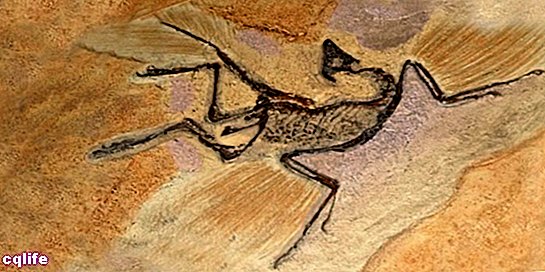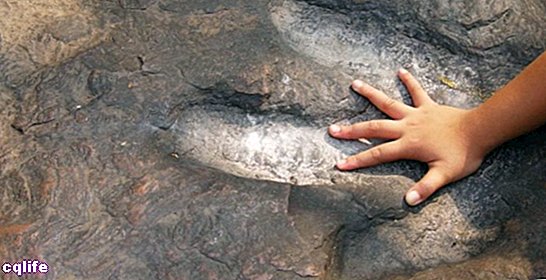- What is paleontology?
- History of paleontology
- Object of study of paleontology
- Paleontology and archeology
- Examples of fossil finds
We explain what paleontology is, what are its branches, history and object of study. Also, examples of fossil finds.

What is paleontology?
Paleontology is the science that studies the geological past of the life in our planet. To do this, it uses the fossil record found under the land surface.
It is a kind of biology in retrospect, interested in understanding the microbiological past, animal, vegetable, etc., of the world, from the evidences that, petrified due to different physicochemical mechanisms, survive the passage of weather.
Paleontology is a discipline that encompasses diverse knowledge from the geology and biology. It can even be considered the result of the crossing of these two sciences.
Their Research Methods include the description analysis of the fossils found, their analysis comparative, and even the formulation of data statistics about it. So it is possible to obtain conclusions on the biological past of the planet, which at the same time are useful to think about our present, and the future.
Paleontology encompasses three branches or subdivisions, which are:
- Paleobiology. He is dedicated to studying organisms of the past and rebuild their living conditions. In turn, it covers paleobotany (study of prehistoric trees), palaeozoology (study of prehistoric animals), micropaleontology (study of microorganisms prehistoric), paleoecology (study of the ecosystems prehistoric), etc.
- Taphonomy. For its part, it deals with processes fossilization and petrification resulting in fossils. This, in turn, can be approached in two different branches: biostratinomy, focused on the origin of fossils and their burial in the lithosphere; and fossyldiagenesis, focused instead on those processes that take place underground, over millennia, and that result in fossilization.
- Biochronology. This branch is dedicated to determining and comparing the chronological age of fossil samples, in order to order them by epoch. There are different dating mechanisms that can be used for this, which are also the object of study of this discipline.
Finally, those who dedicate themselves to this science are known as paleontologists.
History of paleontology
Paleontology dates back, albeit informally, to the first fossil finds that took place around the 6th century BC. C. They were interpreted according to the philosophy Greek of the time: the followers of Pythagoras interpreted them as remains of an archaic and unknown life.
On the contrary, the followers of Plato considered them a kind of “games of the nature”, Imperfect imitations of life, as if God had been practicing before creating the living creatures.
The existence of fossils was, for more than 1,500 years, a hot topic of debate in the West. The Christian religion defended for centuries the idea that life had been created as the Bible relates, without much time having elapsed between the creation of the world and the appearance of the humanity.
Therefore, for the Church the fossils found could not be so old as to be creatures totally unknown to the human being.
During the Scientific revolution From the seventeenth century paleontology had its rebirth. The first formally paleobiological studies occurred, in the hands of naturalists such as Colonna, Nicolaus Steno, Robert Hooke, and many others.
Some of their findings were interpreted as evidence of the biblical Universal Flood, although much later it became clear that they were prehistoric animals, such as dinosaurs.
From then until the eighteenth century, large systematic studies of the fossil record were produced, trying to find the truth they were hiding about the world's past. This objective was only possible with the emergence of the modern sciences and especially from the studies of Lamarck (19th century) and Darwin, who formulated the theory of the origin of species in 1858.
Only from then on did paleontology become an independent science, capable of determining the true age of the planet and unraveling the life forms that ruled it during the millennia prior to our arrival.
Object of study of paleontology

The purpose of paleontology is easy to understand if we look at the etymology of its name, composed of three different Greek voices: palaios, "ancient"; ontos, "Being" or "what is", and logos, "Knowledge" or "reason".
So that paleontology has as its object of study ancient beings, that is, the forms of life that existed on the planet long before the beginning of life. history. The dinosaurs, the big ones mammals, or the earliest forms of bacterial life are just a few examples. Its study is based on samples, evidence and traces: what we call "the fossil record."
East knowledge it is of utmost importance to understand where humanity comes from and how life operates. Sheds light on the conditions that produced life in the first place, or those that prompted its evolution or even those that led to massive and tragic extinctions.
Paleontology and archeology
Although these two sciences are interested in the remote past, and they do so from the evidence preserved in time, their concrete objects of study are radically different.
While paleontology focuses on the life that existed before and during the emergence of humanity, archeology deals with humanity's past: the cultures ancient times, the evidences of their first forms of organization, etc.
Examples of fossil finds

Some recognized finds from the fossil record include the following:
- Finding of the Berlin specimen from Archeopteryx in 1880. The first dinosaur fossil found in which there is evidence of its plumage. This revolutionized the idea of these creatures until then and allowed their recognized link with modern birds, their descendants.
- The oldest human fossil was found in 2018. In Misliya Cave, Israel, and consists of a jaw fragment with most of its teeth intact. The find dates from 170,000 to 200,000 years old.
- The fossilized footprints of Clayton Lake Park. In New Mexico, United States. A set of fossil footprints was found there, including huge and small dinosaur footprints.
- The discovery of Argentinosaurus huincuilensis in the Argentine Patagonia. Which occurred in Neuquén, near the Mountain range from Los Andes in 1989. This dinosaur is one of the few known that inhabited the South America during the Cretaceous, and was one of the land animals most enormous of which it is had the news until now.
